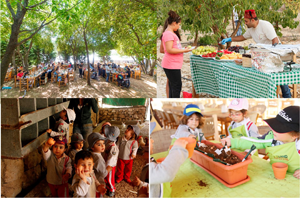During 2015 and 2016, studies were conducted at Absaraka and Dickinson, North Dakota to evaluate the impacts of hemp (applied at 1156 m3 ha−1) and commercial paper mulch, as well as soil-applied biochar (applied at 11.25 m3 ha−1), on weed suppression and strawberry growth during the establishment year, and on weed suppression and strawberry yield during the production year, in a matted row production (MRP) system. During 2015, biochar influenced dry weed biomass only within the hemp mulch, with slightly more weed biomass associated with biochar application compared to zero biochar (3.1 vs 0.4 g m−2), suggesting that biochar may have increased weed germination and/or emergence from beneath hemp mulch. Biochar application also slightly increased soil pH, from 6.9 in non-amended soil to 7.0 in amended soil. Strawberry runner number during 2015 was greater in association with hemp or paper mulch compared to zero mulch (4.5 and 4.9 vs 2.4 runners plant −1, respectively). This result mirrored a similar differential in per berry mass across sites (7.6 and 7.4 vs 6.2 g berry −1 for hemp mulch, paper mulch and zero mulch, respectively). These results may be related to hemp and paper mulch reducing maximum soil temperatures during summer 2015. During the establishment year, both hemp and paper mulch suppressed weeds well compared to zero mulch, although at Absaraka hemp mulch provided slightly better weed suppression than paper mulch. During the production year, both mulches continued to suppress weeds compared to zero mulch at Dickinson. However, at Absaraka, only hemp mulch provided weed suppression compared to zero mulch, possibly because of faster paper degradation caused by greater numbers of large precipitation events and greater relative humidity at Absaraka compared to Dickinson. Weeds were removed from plots during 2015 to allow separation of weed suppression from other possible mulch impacts; therefore, yield data do not reveal striking differences among mulch treatments. Because previous research has demonstrated the impact of weed management during the establishment of strawberries in a matted row system, we concluded that hemp mulch may provide more durable weed suppression compared to paper mulch, which would increase strawberry yield protection in an MRP system. Material cost may be an issue for implementing hemp mulch, as hemp hurd cost was 25 times paper mulch at the application rates used in this study. However, hemp mulch could still be a beneficial option, especially for organic strawberry growers desiring a renewable and environmentally sound replacement for plastic mulch who are able to find affordable local sources of this material.




